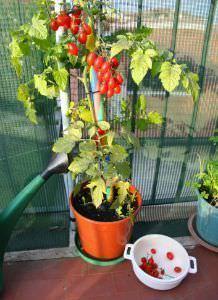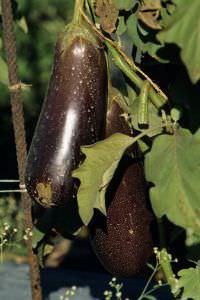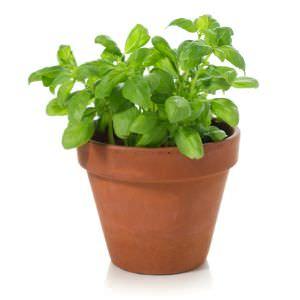Garden in the city
Post from EditorialsTomatoes, eggplant, zucchini, basil and mint from the garden to the table? Here is a little advice to handle your personal garden in the city.
Vegetable garden in the city
 To consecrate what that until recently was only a fashion was Michelle Obama: the photo where she is immortalized with her daughters to take care of her garden has gone around the world promoting the practice of virtue. Since then, the city garden is becoming an established trend also in our homes.
To consecrate what that until recently was only a fashion was Michelle Obama: the photo where she is immortalized with her daughters to take care of her garden has gone around the world promoting the practice of virtue. Since then, the city garden is becoming an established trend also in our homes.
To grow vegetables and herbs in the garden or on the balcony is easy and allows you to bring healthy food to the table, definitely not treated with fertilizers and pesticides, and then there isthe satisfaction of serving the products of our garden. So here's some advice on the subject.
Vegetables garden in the garden and on the balcony
Meanwhile, I want to clarify that what I am about to tell you is true both for the crops in the garden or on the balcony: the only difference lies in the limited availability of space that it offers and therefore it does not allow you to grow too many varieties. What are the most popular vegetables in our personal gardens? Tomatoes, eggplant, zucchini but also herbs like basil and mint: let's see how to treat these plants.
In general, during the months of April and May, the seeds of your crops should be planted in small pots or seedbeds: with the arrival of summer, and then from June onwards, you can transplant your seedlings. Then prepare the vases, of variable diameter depending on the plant, with a bottom of expanded clay and soil in which to place them when they have reached a height of 6/8 cm at least.
Tomatoes in the vegetables garden
 One of the easiest vegetables to grow in pots is definitely the tomato in its different varieties: of course, if you have limited space, avoid growing tomatoes for salad by choosing smaller types such as datterini or cherry tomatoes.
One of the easiest vegetables to grow in pots is definitely the tomato in its different varieties: of course, if you have limited space, avoid growing tomatoes for salad by choosing smaller types such as datterini or cherry tomatoes.
If you do not want to buy the seeds, peel an old tomato and place the part containing the seeds in a colander with a rather dense weave, to prevent them from falling. Put the strainer under running water: with the stream, the seeds will separate easily from the pulp. Such seeds are then wiped and stored in a piece of absorbent paper until use.
As the plant grows vertically, within each vase should be placed support - such as a cane or a wood stick - where to fix the plant as it grows: it is a task not to be underestimated because the weight of the fruit could make the plant fold in on itself, with serious consequences on its growth. Place your plants in a sunn and dry place, and give them water at least once a day, two if it is very hot.
Eggplant and zucchini in the vegetables garden
 The eggplants as well are very easy to grow and do not require special care during their growth: the plants must be transplanted in rather large and deep pots that will be placed in direct sunlight. The planting should be done in June so that already in late summer you can collect the first eggplants.
The eggplants as well are very easy to grow and do not require special care during their growth: the plants must be transplanted in rather large and deep pots that will be placed in direct sunlight. The planting should be done in June so that already in late summer you can collect the first eggplants.
You still have time to plant the zucchini: it is advisable to do so by the end of May. When the plants have reached at least 8 inches tall you need to transplant them: in this case each vase, with a recommended diameter of at least 45 centimeters, will host a single plant. A thin layer of mulch will provide the right protection to your seedling: remember not to expose it to direct sunlight and to water it on a regular basis once a day.
Aromatic plants in the vegetables garden
The aromatic plant par excellence is the basil that, with the arrival of spring, also appears on the shelves of supermarkets and often, against its will, is not going to last long: let's see the most common mistakes.  The basil does not need much water and therefore it should not be watered often, it is also important to remove the excess of water from the floerpot saucer that, in addition to killing the plant, is one of the places where the larvae of annoying mosquitoes lurk.
The basil does not need much water and therefore it should not be watered often, it is also important to remove the excess of water from the floerpot saucer that, in addition to killing the plant, is one of the places where the larvae of annoying mosquitoes lurk.
Another common mistake is to not replace the pot in which the plant is located at the time of purchase: they are often plastic pots and the size is unsuitable for the proper growth of the plant.
Transplant then the plant in a pot with a slightly larger size and possibly in clay, a material that wicks away perspiration. Take care to place the plant in a bright corner of your balcony or garden without exposing it directly to the rays of the sun. Another aromatic plant capable of giving great satisfaction with no particular commitment is mint: place your plants - but also applies to the cuttings - in a pot with a diameter of 45 cm using a soil with a pH - the acidity level of the soil - up to 7 and have the perseverance to keep it moist.
Another aromatic plant capable of giving great satisfaction with no particular commitment is mint: place your plants - but also applies to the cuttings - in a pot with a diameter of 45 cm using a soil with a pH - the acidity level of the soil - up to 7 and have the perseverance to keep it moist.
Finally, remember to pick often the mint leaves and prune it in July. It does not have any particular problems of exposure, ensuring a good resistance to direct exposure to the rays of the sun during periods of hot weather, however, it is important to water it twice a day.
79741 REGISTERED USERS










